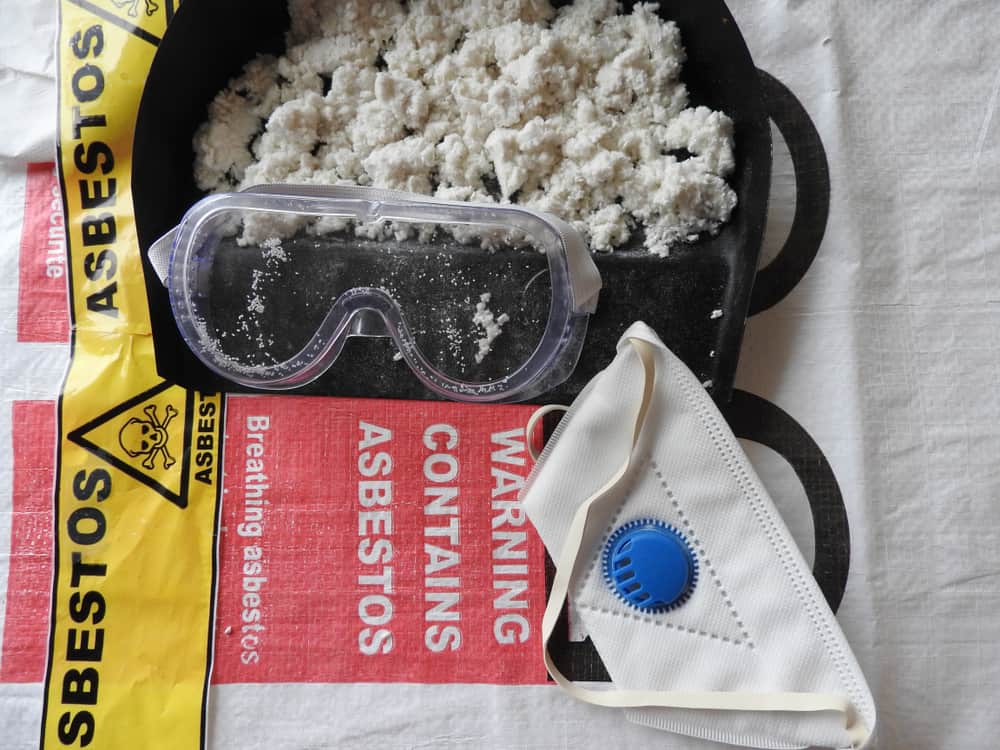
The Health and Safety Executive (HSE) has released its most recent asbestos statistics 2021. The figures show that there were over 5,000 asbestos-related deaths in Great Britain in 2019. This number includes fatalities relating to mesothelioma, lung cancer and asbestosis.
The annual death rate from asbestos-related diseases in the UK has been on the increase over the last 50 years. However, these most recent figures show a slight decline in the number of asbestos-related fatalities. But deaths from asbestos exposure are expected to remain at the current levels for at least the next decade.
Mesothelioma
The HSE recorded 2,369 mesothelioma deaths in the UK during 2019. This represents a seven percent reduction in the number of deaths documented between 2012 and 2018.
There were 1,945 male deaths from mesothelioma in 2019, a nine percent decrease from the annual average between 2012 and 2018.
Female deaths from mesothelioma remained steady with 424 fatalities in 2019.
Both figures were in line with HSE predictions that annual deaths from mesothelioma for both men and women would start to decline by 2020.
Most deaths from mesothelioma occurred in people aged 75 and over. Although mesothelioma deaths are increasing in this age group, they are falling in people under the age of 70. The most at-risk group was men who had worked in the building industry during the time asbestos was used extensively.
Mesothelioma is a form of cancer that is usually caused by inhaling asbestos fibres. Exposure to even a small amount of asbestos can result in mesothelioma. Mesothelioma is generally only diagnosed during the late stages of the disease. It is most often fatal.
Other Asbestos-Related Cancers
Aside from smoking, asbestos exposure is one of the leading causes of lung cancer. The HSE estimates that there are approximately 2,500 asbestos-related lung cancer deaths in the UK every year. This number is predicted to decline as cases of asbestos exposure and the number of people who smoke decrease.
Some 240 cases of asbestos-related lung cancer were reported in 2019, a lower amount than the previous average of 260 cases per year.
Asbestos exposure has been linked to cancer of the larynx, ovary, pharynx, and stomach. Average figures show that annually the UK reports nine cases and three deaths relating to cancer of the larynx and 40 cases and 26 deaths caused by stomach cancer.
Asbestos Awareness Course
Our Asbestos Awareness course provides a thorough understanding of asbestos, its likely locations and associated dangers. It supports compliance with asbestos legislation and teaches participants how to stay safe around asbestos and what to do if they’re accidentally exposed.
Asbestosis
As with mesothelioma, asbestosis is a dangerous disease caused by inhaling asbestos fibres. Asbestosis results in irreversible scarring and inflammation of lung tissue. Patients with asbestosis will usually develop complications that prove fatal. Medical experts regard heavy exposure to asbestos as the leading cause of asbestosis.
It should be noted that asbestosis is often misdiagnosed, so obtaining accurate figures can be problematic.
Deaths involving asbestosis – excluding those that included mesothelioma – have risen in recent years.
According to the HSE figures, 490 deaths were recorded in 2019. Roughly half of these cases made mention of asbestosis on the death certificate, but not as the main cause of death. The HSE reported there were 219 deaths that specifically listed asbestosis as the underlying cause of death.
In total, some 905 asbestosis cases were recorded in 2019 in the UK. Rates of death from asbestosis have been falling for people under 65 but are on the increase for people aged 75 years and over.
Deaths by Region
To calculate death rates in a specific area, the HSE uses a standardised mortality ratio (SMR) to compare the collected localised data with fatalities across the UK.
The area with the highest rates of death from mesothelioma in 2019 was Barrow-in-Furness, which had an SMR of 414.9. Barking and Dagenham had the highest incidence of female deaths from mesothelioma with an SMR of 349.8.
Barrow-in-Furness had the highest number of male deaths from asbestosis in 2019 with an SMR of 873.1. Sunderland reported the highest number for females with an SMR of 4891.4.
Preventing Further Asbestos-Related Fatalities
Asbestos-related diseases can take years to develop, so these figures are largely the result of poor working conditions in the past. Nevertheless, asbestos exposure remains a very real risk. Despite being banned in 1999, asbestos is still present in many buildings throughout the UK.
The best way to prevent asbestos exposure is to have your staff undertake health and safety training approved by UKATA and IATP. The Asbestos Awareness Online Course offered by Human Focus is an affordable and effective way to minimise the risk of asbestos exposure.




















